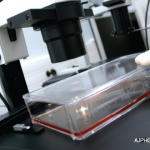Dear Dr. Jones and Dr. Wortmann:
Thank you for the informative article, and for your comments on autoantibodies as diagnostic tools in inflammatory myopathies. On this issue, I would like to comment that several markers that are useful and already or soon commercially available as test kits are not mentioned in the article yet (e.g., anti–HMGCoA-Reductase, TIF1-gamma, MDA-5, TRIM21/Ro52kD, PM-Scl).
Secondly, I was surprised about the statement, “Similarly, anti–mitochondrial M2 antibodies (anti-Mi-2) are generally, though not always, associated with a very good prognosis.” Could it be that it was intended to comment on Anti-Mi2? Anti-Mi2 as part of the nucleosome remodelling and histon deacetylating complex (NuRD) is a relatively specific marker of dermatomyositis, which is unrelated to antimitochondrial antibodies. In the diagnostic lab, we often encounter requests for “M2” instead of “Mi2” and vice-versa, and it is easy to see why—it might have happened in this article as well.
Stephan Regenass, MD
Clinic of Immunology
University Hospital of Zuerich
The Editors Respond
Dr. Regenass is correct that “anti–mitochondrial M2 antibodies” should have been printed as “anti-Mi2 antibodies.” The Rheumatologist apologizes for this typographical error.

